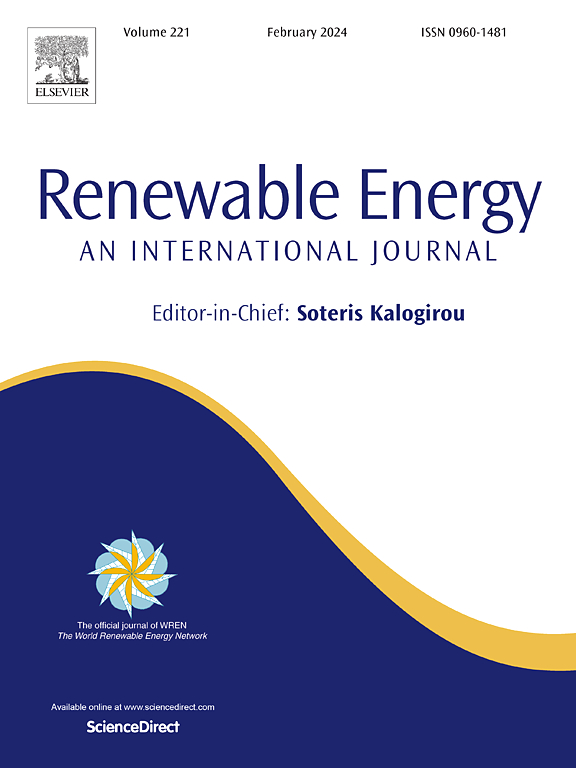用时间序列预测辐射冷却涂层表面温度:小批量训练数据集的验证和超参数优化策略的实现
IF 9
1区 工程技术
Q1 ENERGY & FUELS
引用次数: 0
摘要
辐射冷却涂层可以在太阳辐射下保持其表面温度低于环境空气温度。半球发射率模型(HEM)是一种广泛应用于计算辐射冷却涂层表面温度的物理模型;然而,它对固定辐射特性的依赖限制了它的长期准确性。为了解决这一问题,本研究采用双向长短期记忆(Bi-LSTM)和编码器-变压器(E-T)模型来捕捉冷却性能的动态变化。使用包含原始训练数据集大小20%-50%的子集来验证小批量训练数据集的影响。为了确定最优的超参数组合,提出了一种自动超参数优化策略。结果表明,在所有的训练比率中,Bi-LSTM和E-T都优于HEM,其中E-T的准确率最高。在20% ~ 50%的训练比例范围内,E-T模型的均方根误差(RMSE)、平均绝对误差(MAE)和决定系数(R2)分别为1.24 ~ 1.58°C、0.94 ~ 1.26°C和0.92 ~ 0.95。HEM的RMSE、MAE和R2分别为1.46 ~ 1.76℃、1.18 ~ 1.39℃和0.91 ~ 0.94℃。因此,预测精度提高了大约15%。本文章由计算机程序翻译,如有差异,请以英文原文为准。
Predicting the surface temperature of radiative cooling coatings with time-series forecasting: Validation of the small-batch training dataset and implementation of a hyperparameter optimization strategy
Radiative cooling coatings can maintain their surface temperature below ambient air temperature under solar radiation. The hemispherical emissivity model (HEM) is a widely used physical model for calculating the surface temperature of radiative cooling coatings; however, its reliance on fixed radiative properties limits its long-term accuracy. To solve this problem, this study used bidirectional long short-term memory (Bi-LSTM) and encoder-Transformer (E-T) models to capture the dynamic changes in the cooling performance. Subsets containing 20%–50% of the original training dataset's size were used to validate the impact of the small-batch training dataset. An automatic hyperparameter optimization strategy was also proposed to determine the optimal hyperparameter combination. The results demonstrated that across all training ratios, both the Bi-LSTM and E-T outperform HEM, with E-T providing the highest accuracy. The E-T model, within the 20%–50% training ratio range, exhibited the root mean squared error (RMSE), mean absolute error (MAE) and coefficient of determination (R2) ranging from 1.24°C to 1.58°C, 0.94°C to 1.26°C, and 0.92 to 0.95, respectively. Comparatively, the HEM showed the RMSE, MAE and R2 ranging from 1.46°C to 1.76°C, 1.18°C to 1.39°C, and 0.91 to 0.94, respectively. A roughly 15% prediction accuracy improvement was hence achieved.
求助全文
通过发布文献求助,成功后即可免费获取论文全文。
去求助
来源期刊

Renewable Energy
工程技术-能源与燃料
CiteScore
18.40
自引率
9.20%
发文量
1955
审稿时长
6.6 months
期刊介绍:
Renewable Energy journal is dedicated to advancing knowledge and disseminating insights on various topics and technologies within renewable energy systems and components. Our mission is to support researchers, engineers, economists, manufacturers, NGOs, associations, and societies in staying updated on new developments in their respective fields and applying alternative energy solutions to current practices.
As an international, multidisciplinary journal in renewable energy engineering and research, we strive to be a premier peer-reviewed platform and a trusted source of original research and reviews in the field of renewable energy. Join us in our endeavor to drive innovation and progress in sustainable energy solutions.
 求助内容:
求助内容: 应助结果提醒方式:
应助结果提醒方式:


